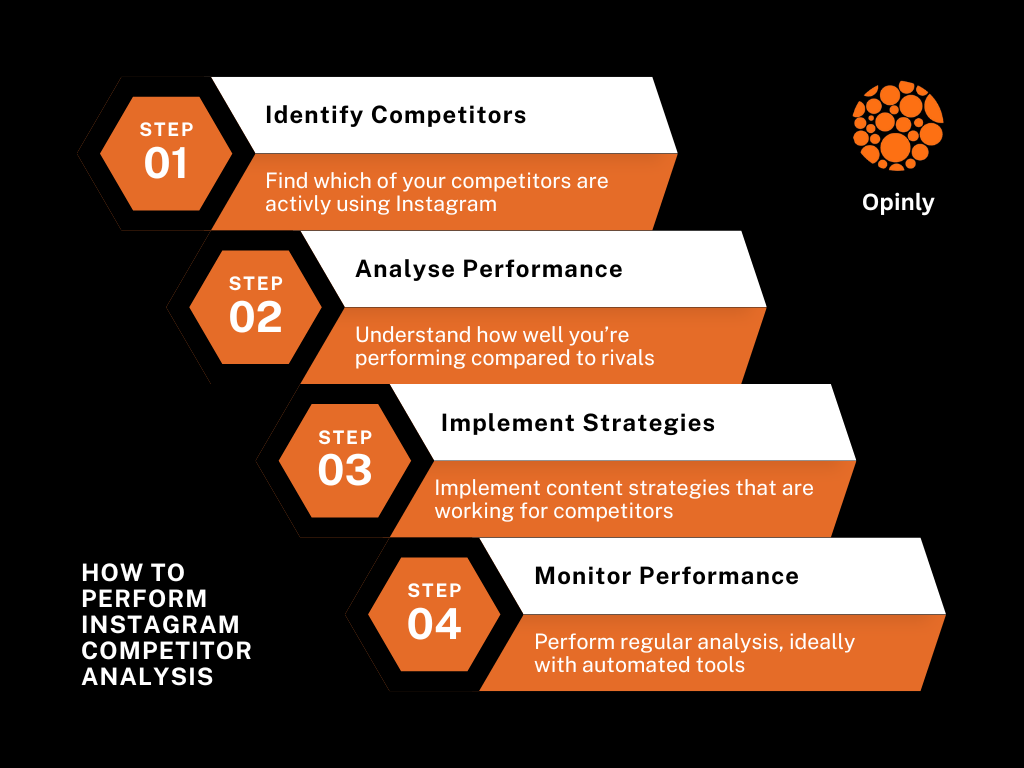How to Develop a Competitive Analysis Framework
How to develop a competitive analysis framework to understand the competition in any industry Isn't just about paying attention to the strengths and weaknesses of your direct competitors.

Understanding the competition in any industry isn't just about paying attention to the strengths and weaknesses of your direct competitor; it requires a clear, organized competitor analysis tool to look at and understand who your direct and indirect competitors are. That's why it's important to develop a competitive analysis framework.
Whether starting a new business or managing a seasoned company, knowing how to analyze your competitors' marketing strategies effectively can make all the difference.
In this article, I'll walk you through each step of creating a competitive analysis framework that fits your competitive advantage and specific business needs.
We'll review how to do strategic group analysis, pinpoint your target audience, gather the right pricing strategies data, and use that information to shape your new market strategy.
What is a Competitive Analysis Framework?
A competitive analysis framework is a competitive structure tool businesses use to evaluate their competitors' strengths and weaknesses and understand the in-depth analysis of how their company and its competitors operate.
A competitor data template helps a business identify key competitors, conduct a competitive analysis report, assess their competitive landscape strengths and weaknesses, and determine how their marketing channel compares regarding market position.
By doing so, analyzing the competitive strategy of your competitors identifies growth opportunities, and avoids potential threats.
Here’s a simple breakdown of what a competitor research framework typically involves:
1. Identifying Your Competitors
The first step is to conduct a competitor analysis. These could be businesses offering similar products or services, targeting the same audience, or operating in the same geographic area.
2. Gathering Business Strategies Information
Once you know who your competitors in your industry are, the next step is to collect data about them. This can include their product range, pricing strategy, market share, customer service, marketing tactics, and other relevant information. Sources of this information can be their websites, customer reviews, industry reports, and even product purchases to assess quality and customer experience.
3. Analyzing the Data
With the data in hand, you can start to analyze your competitor analysis template. This might involve creating a SWOT analysis for each competitor. SWOT stands for Strengths, Weaknesses, Opportunities, and Threats. When you conduct a SWOT analysis, you can see where competitors are doing well, where they’re vulnerable, and where changes in the market might impact them.
4. Comparing Competitors
This analysis framework looks at how each competitor compares to others, including your business. It involves setting up important criteria for your industry—like price, service quality, product features, and market reach—and then ranking each list of competitors against these criteria.
5. Developing Strategies
The ultimate goal of a competitive framework is a structured approach analysis to inform your strategic decisions. By understanding where you stand relative to your competitors, you can identify competitive advantage in the market areas where you can improve. This might lead to changes in your marketing strategy, product development, or other areas of your business operations.
6. Monitoring Changes
The market is always changing, and so are your competitors. That’s why it’s important to develop a competitive analysis framework and update it regularly. Keeping track of new changes in your competitor strategies, and shifts in customer preferences can help you stay ahead.
Key Components of an Opinly AI's Competitive Analysis
Automated Competitor Tracking
Opinly AI uses a sophisticated AI-driven competitor monitoring system designed to provide real-time updates and analytics on your competitors.
This competitor analysis framework system continuously scans your related market to capture any changes in competitor software, including updates, new feature rollouts, and adjustments in pricing structures.
It also tracks general market movements such as the entry of new competitors or shifts in industry standards, ensuring that businesses are not caught off guard.
By automating the competitor tracking process, Opinly AI saves companies significant time and resources, allowing them to focus on strategy and growth rather than manually collecting data.
In-Depth Competitor Analysis Framework Market Insights
Opinly AI's competitive analysis relies on its ability to collect market data and turn it into useful competitor framework insights. It pulls data from various competitor strategies, such as industry reports, customer feedback, and social media strategy, to give a complete picture of what's happening in your business market.
Then, it uses competitive marketing analytics to spot trends and determine what might help or hurt a business. This detailed look at the market helps decision-makers plan smart marketing strategies that fit what customers want and where your target market is headed.
Feature Competitive Analysis Framework Tools
Opinly AI's Feature Comparison Tools provide businesses with a detailed and objective assessment of their product or services relative to their competitors.
Using sophisticated algorithms, Opinly AI's competitive analysis tools systematically analyze and compare competing products' features, functionalities, and capabilities.
By highlighting strengths, weaknesses, and areas for improvement, businesses gain valuable insights into how their offerings compare to the competition, helping them refine their product strategies and stay ahead in the market.
SWOT Analysis Performance Metrics
Opinly AI's Performance Metrics Analysis capabilities help businesses to assess their performance against competitors across key performance indicators (KPIs).
Through rigorous competitor analysis of marketing metrics such as market share, customer satisfaction ratings, and revenue growth rates, Opinly AI provides businesses with valuable benchmarks. With this information, businesses can set realistic growth targets, identify areas for optimization, and fine-tune their marketing strategies to outperform the competition.
Conclusion
Creating a good competitive analysis framework is key for any business that wants to succeed in a tough market. It doesn't just help you collect information about your competitors; it helps you use that information to make smart decisions and stay ahead of the competition.
Discover how Opinly AI can transform your brand and competitors' approach to competitive analysis.
With cutting-edge technology and an insightful competitor analysis model, Opinly AI helps you stay ahead by providing deep insights into market trends and competitor strategies.
Don't let your business fall behind; use the power of Opinly AI to make informed, strategic decisions that drive success.
Explore Opinly AI today and take your competitive analysis to the next level!
Frequently Asked Questions
1. Why is competitive market analysis important for startups?
Competitive market analysis is crucial for startups as it helps them understand the market landscape, identify potential competitors, and gauge market trends. This analysis enables startups to position their products effectively, tailor their marketing strategies, and anticipate changes in the market, ensuring they remain competitive and relevant.
2. How often should competitive product analysis be conducted?
The frequency of competitive product analysis depends on the industry's pace and the level of competition. In fast-evolving industries like technology or fashion, conducting analysis quarterly or biannually is advisable to stay updated with market changes. In more stable sectors, a yearly review might suffice.
3. What are the common benefits of using a competitive analysis?
Competitive analysis offers numerous benefits, including:
- Enhanced understanding of competitive advantages and weaknesses.
- Insights into market trends and consumer preferences.
- Identification of market gaps and opportunities for innovation.
- Improved strategic planning and risk management.
4. Does using a competitive analysis framework influence product development?
Yes, using a competitive analysis framework significantly influences product development by identifying what features are most appreciated by customers, what gaps exist in the current market offerings, and how competitors are addressing these needs. This insight allows businesses to develop products that are not only innovative but also closely aligned with market demands.
5. How does competitive analysis help in strategic planning?
Competitive analysis is a cornerstone of strategic planning, providing critical data that helps businesses develop robust strategies. It informs decisions regarding market entry, product launches, pricing strategies, and marketing campaigns, ensuring that these strategies are grounded in real-world data and have a higher chance of success.
Check out our blog on competitor analysis software that can help automate your framework.




